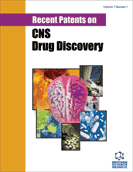Abstract
Injured axons in the adult central nervous system (CNS) exhibit almost no regeneration. Several myelin-associated proteins such as myelin-associated glycoprotein (MAG), Nogo, and oligodendrocyte-myelin glycoprotein (OMgp) have been identified as inhibitors of CNS axonal regeneration in the CNS. Recently, repulsive guidance molecule (RGM) was identified as a potential myelinderived neurite outgrowth inhibitor in vitro and in vivo. These axonal growth inhibitors transmit inhibitory signals through common intracellular molecules such as RhoA and its effector Rho kinases (ROCK). The effects of these axonal growth inhibitors are blocked by inhibition of the Rho-ROCK pathway in vitro. Injuries to the adult CNS induce the activation of the Rho-ROCK pathway, and the inhibition of this pathway promotes axonal regeneration and functional recovery in the injured CNS. Therefore, the Rho-ROCK pathway is a promising target for drug development for the treatment of human CNS injuries such as spinal cord injuries. This review also discusses recent patents and future developments which are useful in the treatment of human CNS injuries.
Keywords: Neuron, spinal cord, Rho, Rho-kinase, axonal regeneration, central nervous system injury
Recent Patents on CNS Drug Discovery (Discontinued)
Title: Rho-ROCK Inhibitors for the Treatment of CNS Injury
Volume: 2 Issue: 3
Author(s): Takekazu Kubo and Toshihide Yamashita
Affiliation:
Keywords: Neuron, spinal cord, Rho, Rho-kinase, axonal regeneration, central nervous system injury
Abstract: Injured axons in the adult central nervous system (CNS) exhibit almost no regeneration. Several myelin-associated proteins such as myelin-associated glycoprotein (MAG), Nogo, and oligodendrocyte-myelin glycoprotein (OMgp) have been identified as inhibitors of CNS axonal regeneration in the CNS. Recently, repulsive guidance molecule (RGM) was identified as a potential myelinderived neurite outgrowth inhibitor in vitro and in vivo. These axonal growth inhibitors transmit inhibitory signals through common intracellular molecules such as RhoA and its effector Rho kinases (ROCK). The effects of these axonal growth inhibitors are blocked by inhibition of the Rho-ROCK pathway in vitro. Injuries to the adult CNS induce the activation of the Rho-ROCK pathway, and the inhibition of this pathway promotes axonal regeneration and functional recovery in the injured CNS. Therefore, the Rho-ROCK pathway is a promising target for drug development for the treatment of human CNS injuries such as spinal cord injuries. This review also discusses recent patents and future developments which are useful in the treatment of human CNS injuries.
Export Options
About this article
Cite this article as:
Kubo Takekazu and Yamashita Toshihide, Rho-ROCK Inhibitors for the Treatment of CNS Injury, Recent Patents on CNS Drug Discovery (Discontinued) 2007; 2 (3) . https://dx.doi.org/10.2174/157488907782411738
| DOI https://dx.doi.org/10.2174/157488907782411738 |
Print ISSN 1574-8898 |
| Publisher Name Bentham Science Publisher |
Online ISSN 2212-3954 |
Related Books
 11
11Related Articles
-
Regulatory Cascade of Neuronal Loss and Glucose Metabolism
CNS & Neurological Disorders - Drug Targets Multiple Protective Functions of Sigma1 Receptor
Current Protein & Peptide Science Targeting of Nuclear Factor-κB and Proteasome by Dithiocarbamate Complexes with Metals
Current Pharmaceutical Design Update on Cancer Related Issues of Mesenchymal Stem Cell-Based Therapies
Current Stem Cell Research & Therapy Cell Microencapsulation Implants into the Central Nervous System
Recent Patents on Nanomedicine Disorders of Consciousness and Pharmaceuticals that Act on Oxygen Based Amino Acid and Monoamine Neurotransmitter Pathways of the Brain
Current Pharmaceutical Design Immunotherapeutic Approaches in MS: Update on Pathophysiology and Emerging Agents or Strategies 2006
Endocrine, Metabolic & Immune Disorders - Drug Targets Biphasic Mechanisms of Neurovascular Unit Injury and Protection in CNS Diseases
CNS & Neurological Disorders - Drug Targets Mesenchymal Stem Cell-Based Therapy for the Treatment of Type 1 Diabetes Mellitus
Current Stem Cell Research & Therapy Xenogeneic Decellularized Extracellular Matrix-based Biomaterials For Peripheral Nerve Repair and Regeneration
Current Neuropharmacology Biomarkers and Future Targets for Development in Amyotrophic Lateral Sclerosis
Current Medicinal Chemistry Virtual Screening of Potential Anti-fatigue Mechanism of Polygonati Rhizoma Based on Network Pharmacology
Combinatorial Chemistry & High Throughput Screening A Review of the Current Role of Proton Therapy in Modern Oncology
Current Drug Therapy Proinflammatory Cytokines and Chemokines in Neonatal Brain Damage
Current Pediatric Reviews The Immunocompromised Host: Immune Alterations in Splenectomized Patients and Clinical Implications
Current Pharmaceutical Design Pathophysiology and Treatment of Diabetic Peripheral Neuropathy: The Case for Diabetic Neurovascular Function as an Essential Component
Current Diabetes Reviews Olfactory Ensheathing Cells Protect Cortical Neuron Cultures Exposed to Hypoxia
CNS & Neurological Disorders - Drug Targets P2X1 and P2X2 Receptors in the Central Nervous System as Possible Drug Targets
CNS & Neurological Disorders - Drug Targets Stereotactic Body Radiotherapy in the Management of Head and Neck Malignancies
Current Cancer Therapy Reviews Interpreting the Mechanisms by which Integrins Promote the Differentiation of Mesenchymal Stem Cells and Integrin Application Prospects
Current Stem Cell Research & Therapy






















